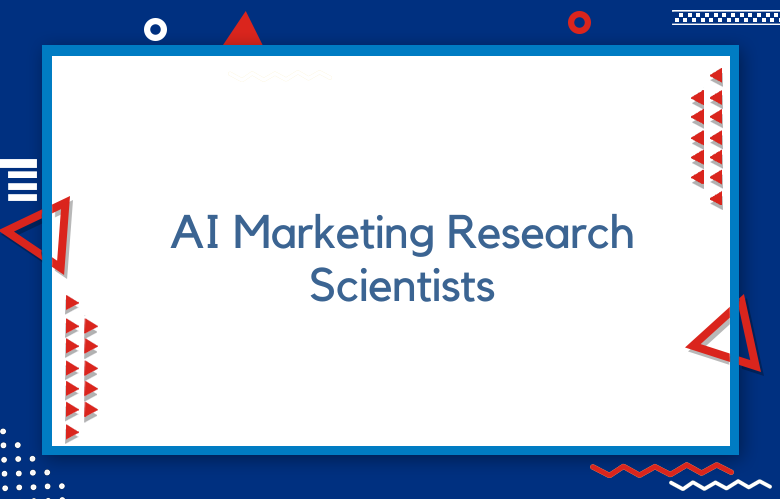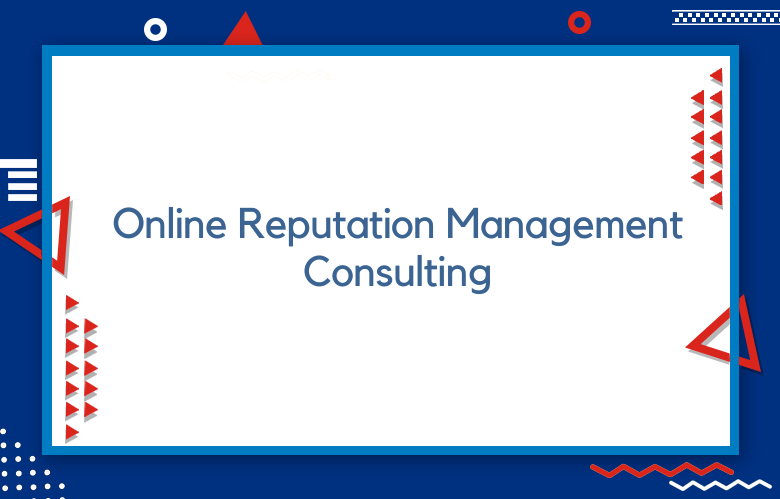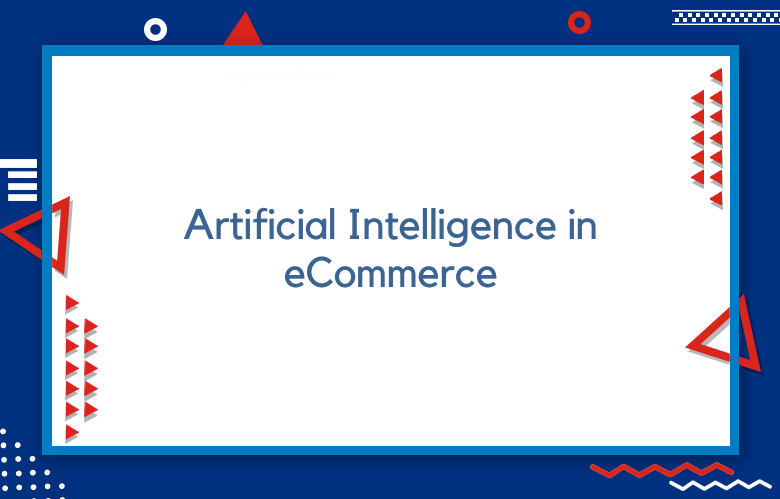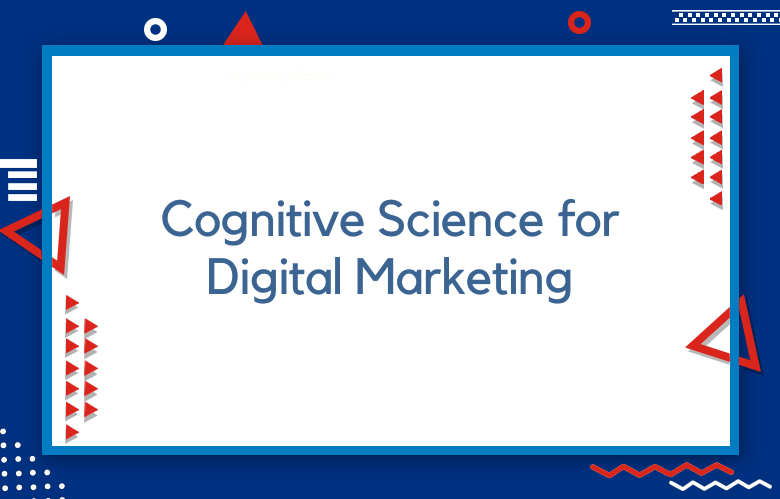Winning the Talent Race for AI Marketing Research Scientists

The “AI Marketing Research Scientist” role, a specialist who develops novel algorithms to address core marketing challenges, has become a strategic requirement for companies seeking a durable competitive edge.
Although the exact job title is rare, demand for this hybrid skill set is accelerating. This report synthesizes market data, role definitions, and technical requirements into a playbook for attracting, enabling, and retaining these innovators.
Winning requires rethinking how organizations define roles, structure teams, measure impact, and manage risk.
AI Marketing Research Scientist
An AI Marketing Research Scientist is an emerging career at the intersection of artificial intelligence, data science, and marketing. The role combines advanced AI methods with consumer insight to drive innovation and measurable growth through data-driven strategy.
Role Overview and Responsibilities
AI Marketing Research Scientists use machine learning to improve how businesses understand and engage customers.
Research and development
They design AI-powered research methods, build predictive models for consumer behavior, implement sentiment analysis for brand monitoring, and develop recommendation and personalization systems for targeted outreach.
Data analysis and insight generation
They process large structured and unstructured datasets, run real-time trend analyses, apply natural language processing for social listening and feedback, and create predictive models to forecast market shifts and preferences.
Strategic applications
They automate competitor intelligence, design AI-enhanced surveys and chatbot research tools, build dynamic pricing models informed by market signals and behavior, and run cross-channel attribution to evaluate campaign effectiveness.
Essential Skills and Qualifications
Technical expertise
Strong programming skills in Python, R, and SQL. Experience with TensorFlow, PyTorch, and scikit-learn. Working knowledge of deep learning and NLP. Familiarity with big data and cloud platforms such as AWS, Google Cloud, or Azure.
Marketing and research knowledge
Understanding of consumer psychology and decision processes. Command of quantitative and qualitative research methods. Proficiency in statistical modeling and interpretation. Practical knowledge of attribution, segmentation, and campaign optimization.
Soft skills
Analytical thinking to turn complex data into action. Clear communication to translate technical work into business decisions. Creative problem-solving to apply AI to real marketing challenges.
Career Progression Path
Entry level, 0–2 years
Junior AI Marketing Analyst focuses on data preparation, baseline models, and project support.
A Marketing Data Scientist emphasizes statistical analysis and consumer insights.
Mid-level, 3–7 years
AI Marketing Research Scientist leads research projects and builds advanced models.
Senior Marketing Analytics Specialist manages multi-channel attribution and predictive modeling.
Senior level, 8+ years
The Principal AI Research Scientist sets research direction and advances marketing methods.
The Director of AI-Driven Marketing Research leads teams and the organization’s AI research agenda.
Salary Trends and Compensation
India, 2025
Entry-level typically ranges from ₹8 to ₹15 lakhs per year.
Mid-level ranges from ₹15 to ₹35 lakhs.
Senior level ranges from ₹35 to ₹70 lakhs.
Principal or director roles often start around ₹70 lakhs per year and can rise higher.
Technology hubs such as Bangalore, Mumbai, and Pune tend to pay 20 to 40 percent more than tier-2 cities.
Global
In the United States, total compensation commonly ranges from 130,000 to 489,000 dollars per year.
Entry-level roles often fall between $95,000 and $120,000.
Senior roles often range from 180,000 to 250,000 dollars or more.
Principal scientists can earn over $400,000, depending on the company, equity, and location.
Industry Applications and Opportunities
Technology and e-commerce
Scientists develop personalization and recommendation systems that boost engagement and downstream revenue.
Healthcare and pharmaceuticals
They analyze patient behavior for market strategy and build models for product positioning and market sizing.
Financial services
They build predictive models for acquisition and retention, and develop AI-driven risk frameworks for marketing investments.
Retail and consumer goods
They design dynamic pricing and demand forecasting, and build granular segmentation for targeted campaigns.
The Double-Headed Scarcity: A Hidden Talent Pool
The title “AI Marketing Research Scientist” is virtually absent from job boards, yet the underlying skills are in high demand.
AI-related job postings increased by 38% from 2020 to 2024, and 50% of employers reported hiring gaps. This indicates that qualified professionals exist under other titles such as “Applied Scientist – Ads/Growth” or “ML Researcher, Personalization.”
Organizations should rebrand searches around these common variants to uncover hidden talent pools and accelerate hiring.
The Premium Stack: Budgeting for a New Class of Talent
Compensation for this role is multiplicative, not additive. Expertise in large language models commands a 25–40% pay premium, and mastery of MLOps adds 20–35%.
When combined with deep marketing knowledge, total compensation for senior roles reaches $300,000–$400,000+, with the top 1% exceeding $1 million. Budget at least 30% above general AI research roles to compete with Big Tech and late-stage startups.
The ROI Mandate: From Model Accuracy to P&L Impact
Boards expect measurable lift, not just technical novelty. Netflix’s recommendation engine drives 80% of content watched. Klarna reduced marketing costs by 37% ($10 million annually) through the use of AI.
Tie the scientist’s objectives directly to business KPIs such as Customer Lifetime Value (CLV), Return on Ad Spend (ROAS), and incremental lift to secure executive sponsorship.
The Innovation Moat: Funding Research Beyond Deployment
Deep reinforcement learning and causal inference are essential for next-generation personalization and attribution models, but rarely appear in standard job descriptions.
Companies that only apply existing models risk being leapfrogged.
Fund dedicated R&D sprints of 6–12 weeks to develop novel algorithms and build a sustainable competitive moat.
The Governance Imperative: Mitigating Brand and Financial Risk
GDPR fines can reach 4% of global revenue, and generative AI scandals have forced public apologies from major brands.
Establish a Responsible AI review board and mandate Model Cards, fairness audits, and “red-teaming” before exposing models to customers.
The Hidden Bottleneck: Infrastructure Before Headcount
Advanced AI, especially DRL for real-time recommendations, needs low-latency infrastructure that many marketing stacks lack.
Hiring a top-tier scientist without feature stores or streaming inference platforms leads to frustration and failure. Invest in a modern real-time data and MLOps architecture first.
The Organizational Shift: Embedded Pods Outperform Central Labs
Cross-functional pods that embed researchers alongside creative, analytical, and technical specialists release experiments significantly faster than siloed teams.
Place at least one research scientist inside each high-value customer journey or funnel-optimization pod to shorten the build–measure–learn loop.
Explosive Market Demand and Labor Outlook
The market for professionals who combine advanced AI research with marketing expertise is strong. AI-related job postings grew 38% globally between 2020 and 2024.
In Q1 2025, U.S. postings reached 35,445, a 25.2% increase from the prior year. More than half of AI roles now reside outside of IT, reflecting a deep integration into core business functions.
Nearly 50% of employers report difficulty finding qualified candidates, giving skilled professionals significant leverage.
Demand is highest where AI directly affects revenue and customer experience. E-commerce, adtech, SaaS, and media companies are leading the charge. Klarna cut marketing costs by $10 million annually.
Netflix drives 80% of content watched through AI recommendations. Amazon relies on personalized recommendations for CLV. Yum Brands achieved double-digit increases in consumer engagement.
Microsoft actively hires Principal Applied Scientists for computational advertising. These examples link AI research to measurable business outcomes, justifying continued investment.
Amazon, Apple, Google, Meta, and Microsoft all invest heavily in marketing-related AI applications.
Generative AI adoption has accelerated this trend. Job postings mentioning generative AI rose from 55 in January 2021 to nearly 10,000 by May 2025.
In marketing, generative AI powers personalized content creation, ad copy generation, and scaled customer interactions.
Role Definition and Differentiators
This role differs from both general AI Research Scientists and Marketing Data Scientists.
Its focus is the research and development of novel AI/ML techniques for marketing problems rather than applying existing models.
An AI Marketing Research Scientist develops and prototypes new algorithms for personalization, causal measurement, and CLV modeling, designs rigorous experiments to measure causal impact, publishes findings in top-tier conferences, and partners with engineering and product to integrate outcomes into production.
A Marketing Data Scientist applies established models, analyzes large-scale datasets, and delivers dashboards and reports to stakeholders.
Deep expertise is required in CLV, attribution modeling, marketing mix modeling, and privacy-preserving techniques such as federated learning and differential privacy.
High-Impact Problem Domains
Four areas account for most near-term ROI:
- Dynamic personalization and recommendation/ranking: Moving beyond static recommendations to adaptive systems using DRL, sequential recommender systems, and graph neural networks.
- Privacy-preserving learning: Techniques that train models on sensitive data without compromising privacy or violating GDPR/CCPA, including federated learning, differential privacy, and secure multi-party computation.
- Customer lifetime value and churn prediction: Sophisticated forecasting using survival analysis, deep learning, probabilistic CLV models, and reinforcement learning for retention interventions.
- Causal measurement, attribution, and marketing mix modeling: Rigorous frameworks for incremental lift and budget allocation, combining MTA with incrementality measurement.
Advanced Methodologies and Technical Stack
Success depends on mastery of research-grade frameworks and production-ready infrastructure:
- Deep reinforcement learning for dynamic personalization.
- Causal inference libraries such as EconML, DoWhy, and CausalML.
- Privacy-preserving ML frameworks (TensorFlow Federated, DP-Py, Opacus).
- Feature stores like Tecton and Feast, streaming systems like Kafka and Kinesis, and MLOps platforms like MLflow, Kubeflow, SageMaker, and Vertex AI.
Organizational Models and Governance
Leading organizations integrate AI throughout their operations rather than isolating it. Placement options include:
- Embedding scientists within cross-functional pods or hubs focused on specific objectives (e.g., customer journey teams).
- Centralizing in a marketing intelligence hub to lead predictive analytics.
- Assigning liaisons from a central research organization who work closely with marketing technology foundations.
Governance requires responsible AI councils with members from marketing, data science, legal, compliance, and ethics.
Implement model risk management, reproducibility standards, experiment tracking, and data/model versioning.
Use Datasheets for Datasets and Model Cards to document purpose, performance, limitations, and ethical considerations.
KPI and Impact Measurement
Measuring impact means shifting from surface metrics to causally valid outcomes tied to business goals.
Track cost per acquisition, conversion rate, CLV, ROAS, churn rate, and average order value. Use rigorous experimental designs such as A/B/n testing, CUPED, offline counterfactual evaluation, and simulation platforms like RecSim and RecoGym.
Improve attribution by integrating marketing mix modeling with multi-touch attribution.
Compensation and Talent Strategy
Median annual salary for general AI roles in Q1 2025 reached $156,998. For research scientists, compensation rises with seniority:
- Postdoctoral Researcher: $95,000–$140,000
- Research Scientist: $140,000–$220,000
- Senior Research Scientist: $200,000–$350,000
- Principal Research Scientist: $300,000–$400,000+
General marketing researchers average $118,611; senior data scientists in adtech average $123,740. Packages include base salary, performance bonuses, and equity grants reaching $2–4 million at late-stage startups for top talent.
Compensation levers include specialization premiums (LLM +25–40%, MLOps +20–35%, AI safety +45%), geography (major U.S. hubs command 20–30% more), company stage (higher equity at startups, higher base salary at public companies), and dual-ladder career paths to retain top scientists without forcing them into management.
Hiring Hubs and Work Models
Key hubs include the San Francisco Bay Area, Seattle/Redmond, and New York City, with Canada also notable.
In Europe, London, Cambridge, Paris, and Munich host major research outposts.
In Asia, Bangalore, Noida, Beijing, Suzhou, and Singapore are rapidly growing.
Hybrid and fully remote work expands the talent pool but requires geo-indexed pay bands.
Title Variants and Search Strategy
Because the “AI Marketing Research Scientist” title is scarce, look for talent under adjacent titles such as:
- Principal or Senior Applied Scientist (common at Microsoft and Apple)
- AI Research Scientist or ML Researcher (Meta and Apple)
- Senior Marketing Data Scientist or Applied ML Scientist for Growth/Ads
- Research Engineer/Scientist or ML Engineer-Product/Personalization
This reflects a nascent, embedded function that leading AI companies may call by internal titles.
Risk and Ethical Compliance Playbook
Implement privacy-by-design, data minimization, transparent consent, and privacy-enhancing technologies.
Conduct regular bias audits, maintain human oversight, and use diverse datasets.
For generative content, red-team models before deployment, restrict outputs to approved scopes, and introduce mindful friction to prevent manipulative designs.
Action Roadmap: 90-Day Plan
Days 1–30 (Infrastructure Readiness):
Audit the data stack, feature stores, streaming systems, MLOps maturity, and experimentation platforms to ensure optimal performance and efficiency. Approve a roadmap and budget to address identified gaps.
Days 30–60 (Hiring Funnel and Employee Value Proposition):
Rewrite job descriptions targeting title variants, highlight novel research opportunities, define a competitive compensation package with equity, and involve senior leadership in interviews.
Days 60–90+ (First-Quarter Research Sprints):
Onboard the scientist into a cross-functional pod with a clear business objective. Launch a six-week research sprint in a high-impact domain (e.g., uplift modeling for a key channel). Set baseline KPIs and Plan for deployment or A/B testing.
Future Growth and Market Outlook
The field is expanding rapidly. Many teams report meaningful ROI improvements after adopting AI for marketing. The broader AI market and AI marketing tools market are both forecast to grow strongly through 2030.
Emerging trends
Generative AI for content creation and campaign development.
Real-time personalization at the individual level.
Responsible AI practices for consumer research.
Cross-platform analytics that unify signals across digital touchpoints.
Getting Started in the Field
Education
A bachelor’s degree in computer science, statistics, marketing, or a related field is typical. Research-focused roles often prefer a master’s degree or a PhD. Certifications in AI, ML, and marketing analytics can help.
Practical experience
Build a portfolio with real marketing AI projects. Contribute to open-source analytics tools. Compete in Kaggle challenges on consumer prediction. Pursue internships at companies that utilize AI in their marketing efforts.
The AI Marketing Research Scientist role offers strong growth potential, competitive compensation, and a chance to shape how businesses understand and serve customers as AI adoption accelerates.
FAQs about the “AI Marketing Research Scientist” Role
What is an AI Marketing Research Scientist?
An AI Marketing Research Scientist develops new AI/ML algorithms to solve core marketing problems, such as personalization, attribution, and customer lifetime value modeling, rather than simply applying existing models.
How is this role different from a Marketing Data Scientist?
Marketing Data Scientists mainly apply established models and produce dashboards or reports. AI Marketing Research Scientists invent and prototype novel approaches, publish findings, and integrate them into production systems.
What skills are essential for an AI Marketing Research Scientist?
- Programming: Python, R, SQL
- Frameworks: TensorFlow, PyTorch, scikit-learn
- Knowledge of deep learning, NLP, reinforcement learning, and causal inference
- Marketing expertise in segmentation, attribution, CLV, and consumer psychology
- Communication and analytical thinking to link models with business outcomes
What is the typical career path?
- Entry-level (0–2 yrs): Junior AI Marketing Analyst or Marketing Data Scientist
- Mid-level (3–7 yrs): AI Marketing Research Scientist or Senior Analytics Specialist
- Senior (8+ yrs): Principal AI Research Scientist or Director of AI-Driven Marketing Research
What are the salary ranges in 2025?
- India: ₹8–15 L (entry), ₹15–35 L (mid), ₹35–70 L (senior), ₹70 L+ (principal/director)
- US: $95k–$120k (entry), $180k–$250k (senior), $300k–$400k+ (principal), with top 1% exceeding $1M, including equity
In which industries is the demand highest?
E-commerce, adtech, SaaS, media, retail, financial services, healthcare, and any sector where AI directly impacts revenue or customer experience.
Why is this talent hard to find?
The exact job title is rare, but the skills exist under variants like “Applied Scientist – Ads/Growth” or “ML Researcher, Personalization.” Rebranding searches uncovers hidden talent pools.
What technologies and infrastructure support success?
Deep reinforcement learning, causal inference libraries (EconML, DoWhy), privacy-preserving ML (TensorFlow Federated, Opacus), feature stores (Tecton, Feast), streaming systems (Kafka, Kinesis), and MLOps platforms (MLflow, Kubeflow, SageMaker, Vertex AI).
How can organizations attract and retain this talent?
Invest in modern infrastructure first, offer at least 30% above general AI roles, provide clear research opportunities, embed scientists into cross-functional pods, and maintain responsible AI governance.
How is success measured?
Shift from model accuracy to business KPIs such as Customer Lifetime Value, Return on Ad Spend, incremental lift, churn reduction, and cost per acquisition using rigorous experimental designs.



